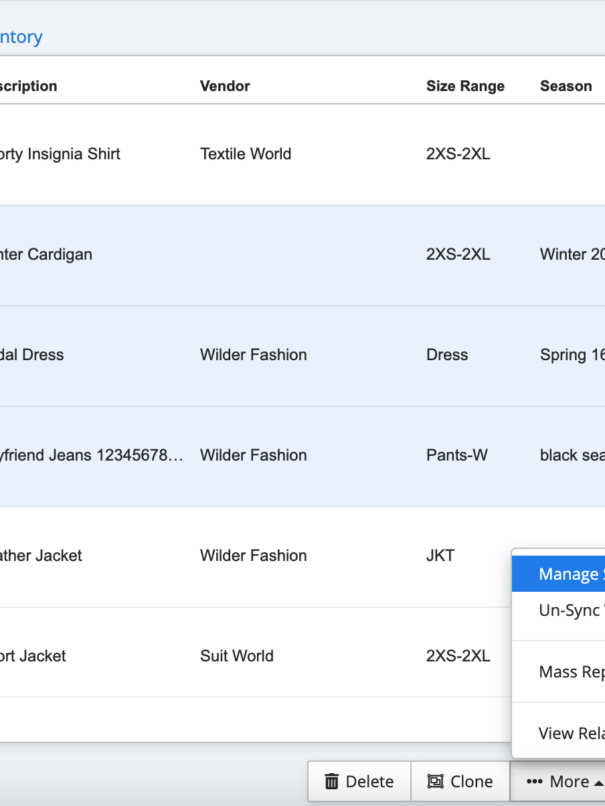It’s not easy to create a smart eCommerce supply chain management strategy because it involves many components including transferring finished products from a manufacturer to a third party or a seller, tracking inventory, warehouse management, delivery, dealing with returns, etc. If one of the supply chain’s stages deviates from the plan, the entire supply chain will suffer.
The efficiency with which you manage your supply chain is a key determinant of your future success, regardless of whether your company is B2C or B2B eCommerce. As your sales and business model evolve, there are opportunities to optimize your supply chain once you have a good eCommerce logistics plan in place.
In this post, we’re explaining how you can simplify your eCommerce management so that you may improve supply chain operations, lower logistics expenses, and keep your customers happy.
Photo by Karolina Grabowska from Pexels
What is an eCommerce Supply Chain?
A supply chain is a series of logistics activities that includes raw material production, completed goods manufacture, inventory management, storage, order fulfillment, and delivery. The aim is to provide a high-quality product and a positive experience for your customers, and each supply chain stage is critical to building and running a reliable business.
What Is eCommerce Supply Chain Management?
Supply chain management in eCommerce includes controlling the flow of resources, information, and capital among the stages and entities in the eCommerce supply chain, starting from the provision of raw materials to the delivery of finished products to the customer.
Suppliers, vendors, manufacturers, warehouses, transportation and logistic companies, fulfillment and distribution centers, and the final consumers are all part of the supply chain. Each of these entities is in charge of a certain link in the supply chain and has a role in whether or not you meet your customers’ expectations.
How eCommerce Supply Chain Management Works
To increase efficiency and speed at every stage of the supply chain, supply chain management systems have progressed from manual and traditional supply chain management (SCM) systems to advanced systems that use AI and ERP software solutions.
The eCommerce supply chain management is comprised of 5 stages:
- Planning. During the planning step, you gather information about your supply chain in order to determine how much inventory you’ll need to meet market and customer demands.
- Sourcing. During this stage, you look for suppliers, vendors, and manufacturers who can supply the inventory you need.
- Making. This stage entails transforming raw materials into finished products, as well as preparing those products for distribution to consumers.
- Logistics, also referred to as delivering, encompasses all types of transportation of goods along the supply chain to the final consumers.
- Reverse logistics, also known as returns processing, entails processing returned products from buyers and returning expired or damaged goods from your warehouse to your supplier.
Every stage of the supply chain management system plays a role in the chain’s overall efficiency. An improvement or malfunction in one stage will have repercussions throughout the entire chain.
5 Supply Chain Strategies for eCommerce Businesses
eCommerce companies should always be searching for ways to optimize and improve fulfillment and logistics systems. Here are a few strategies that retail and wholesale eCommerce businesses can employ to improve efficiency and boost online sales.
Use Inventory Management Software
If it’s not controlled in real-time as orders are placed and shipped out, inventory management can become a serious issue. By using effective inventory management software or ERP (Enterprise Resource Planning) inventory system in combination with inventory management strategies, you’ll be able to avoid stockouts, optimize freight shipments, and accelerate product deliveries to your customers. In addition, you can gain access to useful data to aid in your decision-making on how to optimize your supply chain.
Review Your Sourcing Partners and Strategies
Great quality, low prices, and fast lead times are all attributes of an ideal sourcing partner. However, finding a sourcing partner that provides all this isn’t easy, so most eCommerce companies will have to select which characteristic is most important to their customers and provides them with the most competitive advantage. Is your plan to produce high-quality goods? The most cost-effective goods? Or maybe your goal is to get your goods to market as quickly as possible? Giving answers to these questions might also assist you in figuring out whether you should be sourcing domestically or internationally.
Improve External and Internal Communication
As your eCommerce business expands, you’ll need to hire more people and partner up with more vendors. Maintaining open and transparent communication is crucial in order to ensure that everyone is on the same page, but also to reduce errors, confusion, and downtime. Effective communication leads to increased efficiency, faster service, and a decreased number of returns.
Streamline Warehouse Operations
From tracking inventory movement to managing warehouse workers, you’ll want to take steps to streamline your warehouse operations by cutting carrying costs, improving inventory storage, and optimizing the fulfillment process. Having an effective warehouse management system in place can assist in the management of inventory storage and levels, as well as the improvement of productivity and the effective fulfillment of orders. It can also contribute to increased accuracy, thus saving you time and reducing the likelihood of human errors without the requirement for ongoing warehouse audits.
Reduce Costs and Shipping Times
The fact that Amazon can now deliver to over 70% of the population of the United States in a single day inevitably puts smaller eCommerce companies under pressure to improve their shipping times. But is it possible to increase delivery speed without affecting costs?
Collaborating with a 3PL provider (third-party logistics) is one option to achieve this. Most 3PLs have partnerships with carriers and receive special rates because of the volume they carry. Furthermore, if a third-party logistics provider has more than one fulfillment center, they can ship from the one nearest to your customer, allowing you to get your product to them much faster and for less money.
Photo by Bench Accounting on Unsplash
What Are the Benefits of eCommerce Supply Chain Management?
Optimizing your eCommerce supply chain can help improve internal operations but also have a significant impact on the customer experience. Here are some of the most important benefits of streamlining your supply chain:
Accurate Inventory Management
In the eCommerce supply chain, inventory management is crucial. By optimizing inventory levels, you can improve stock control, simplify inventory evaluation, avoid dead stock and stockouts, and estimate future demand.
Some of the options for addressing common eCommerce inventory concerns include conducting regular inventory audits, setting reorder points based on previous order data and future estimates, and using inventory management software.
Cost-Effective Delivery Rates
Another way to optimize your eCommerce supply chain is by coming up with strategies to cut delivery costs. Checking into carrier shipping discounts based on order volume, using the appropriate packaging for products depending on their dimensions and weight, and spreading inventory across geographic areas once it is cost-effective are just a few examples.
The form of transportation you choose can also have a significant impact on shipping costs. Expedited air delivery is quick, but it is also expensive. Freight shipping, on the other hand, uses more affordable transportation methods. LTL freight, for instance, allows you to combine your cargo with that of other carriers traveling in the same direction and only pay for your piece of the trailer rather than the entire trailer.
Faster Shipping Times
Shipping is one of the most important stages in the supply chain. If you get it right, it can help reduce cart abandonment and provide a significant competitive advantage. You need to identify and address any delays in the supply chain, especially in shipping. Shipping times are influenced by two key factors: 1) the locations of your manufacturers, warehouses, and end customers and 2) the transportation mode.
Improved Customer Experience
A well-organized eCommerce supply chain means that you can provide the finest possible customer service for each order. By identifying strategies to optimize your supply chain, you can lower shipping costs, shorten shipping times, and decrease the likelihood of human errors. As your supply chain becomes more robust, you can devote more resources to enhance communication with customers by allowing them to track purchases in real-time and delivering updates from the moment their order is processed to the time it is delivered.
The Bottom Line
By discovering ways to streamline your eCommerce supply chain, you’ll be able to remove issues, increase productivity, and create a more effective team. By shortening delivery times, delivering better shipping costs, and preventing stockouts, a simplified supply chain will eventually provide an improved customer experience.







